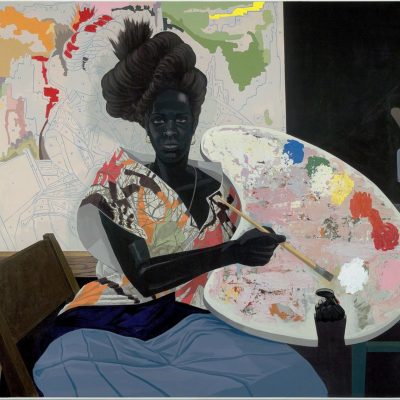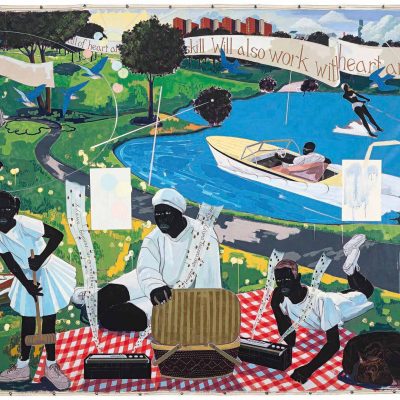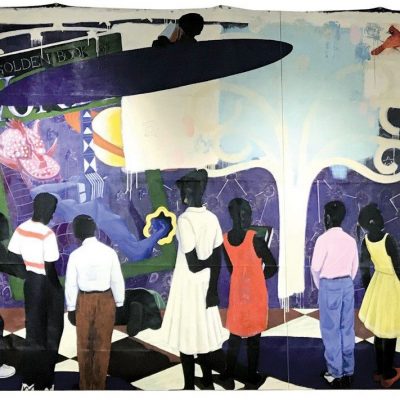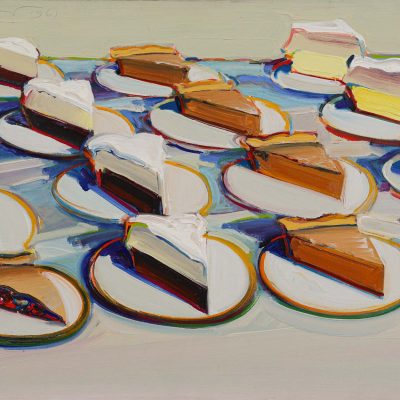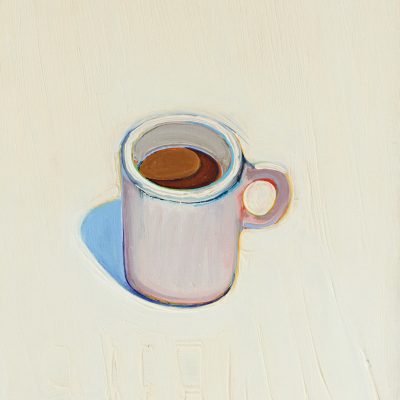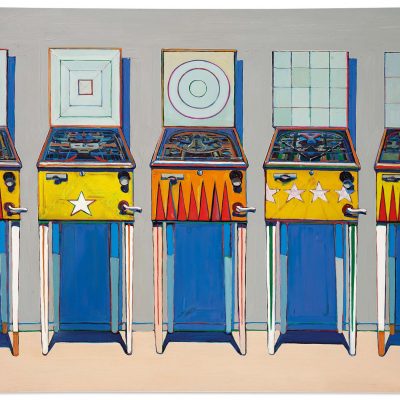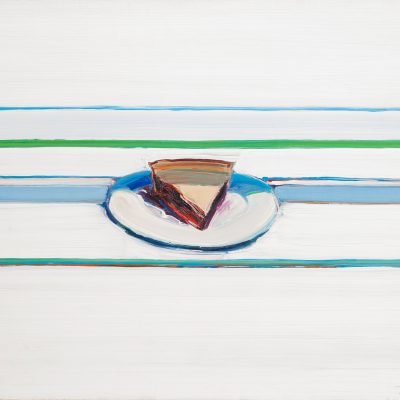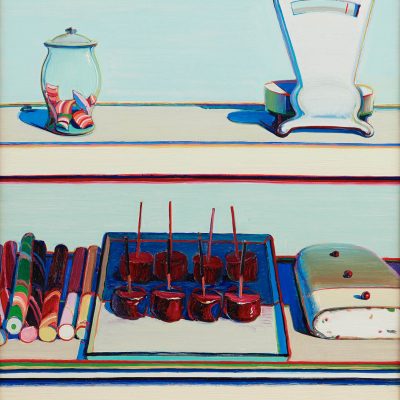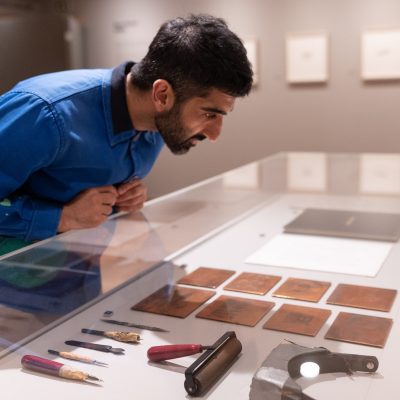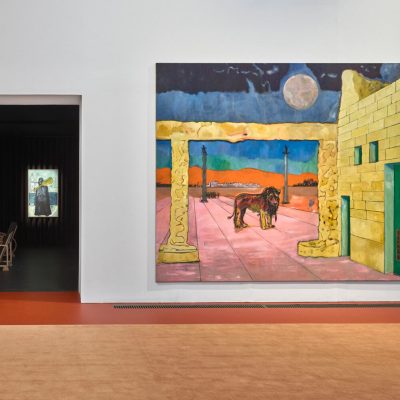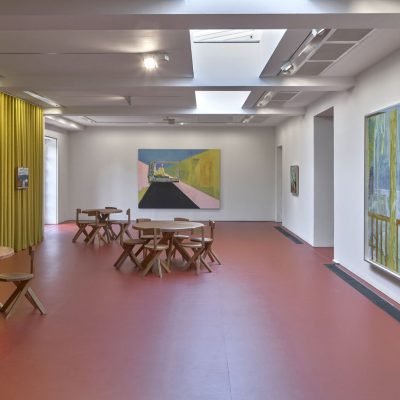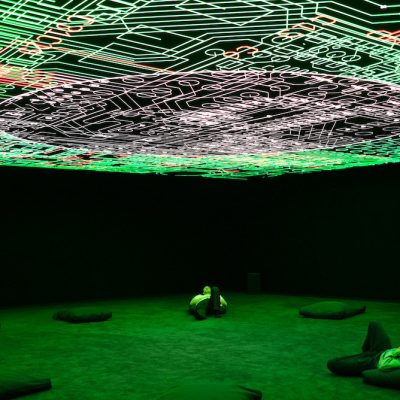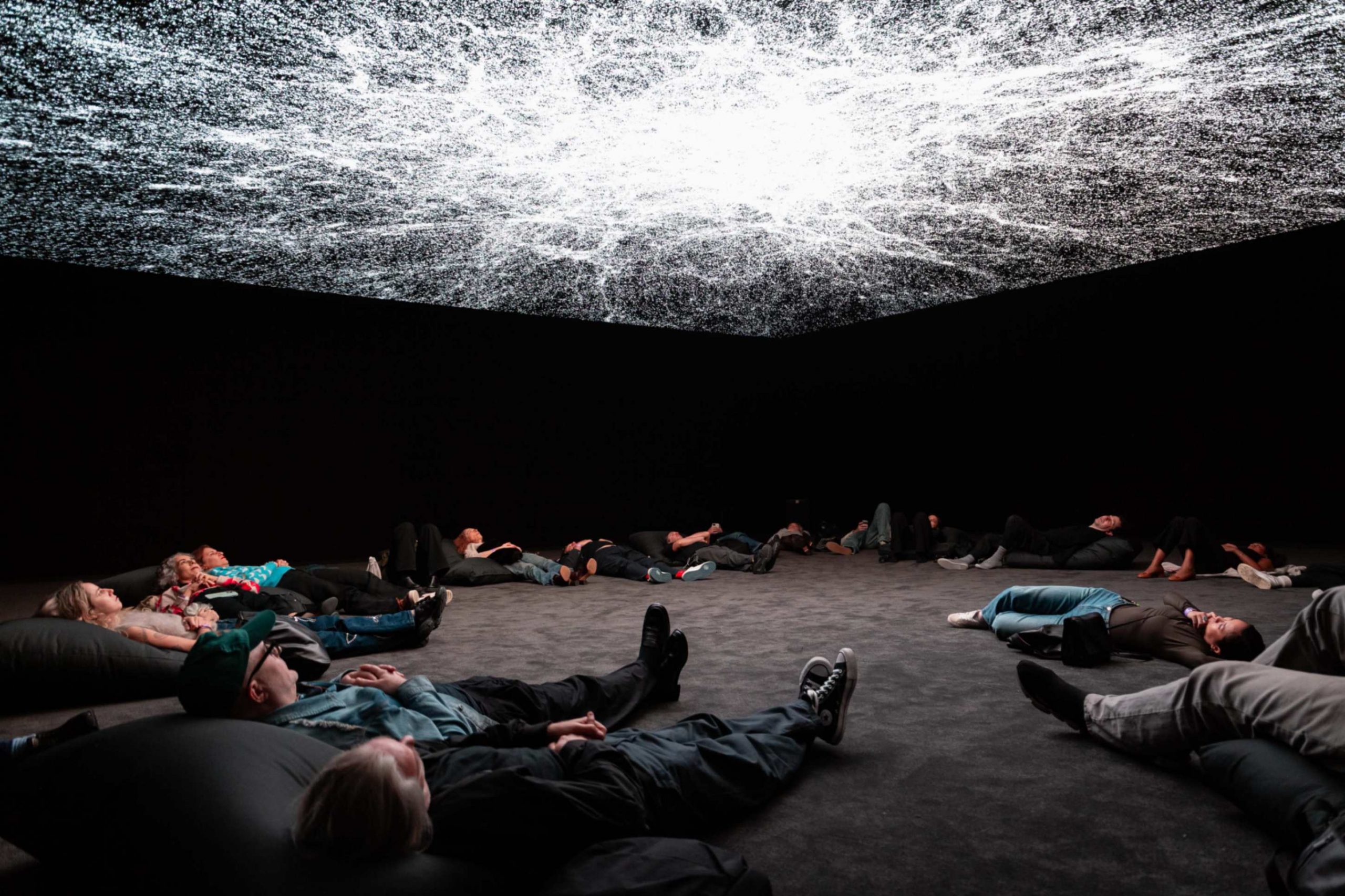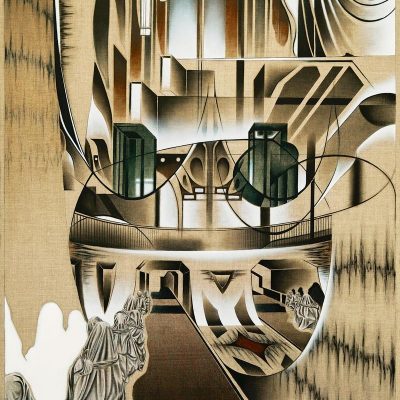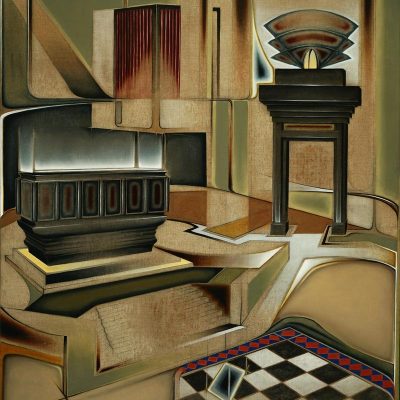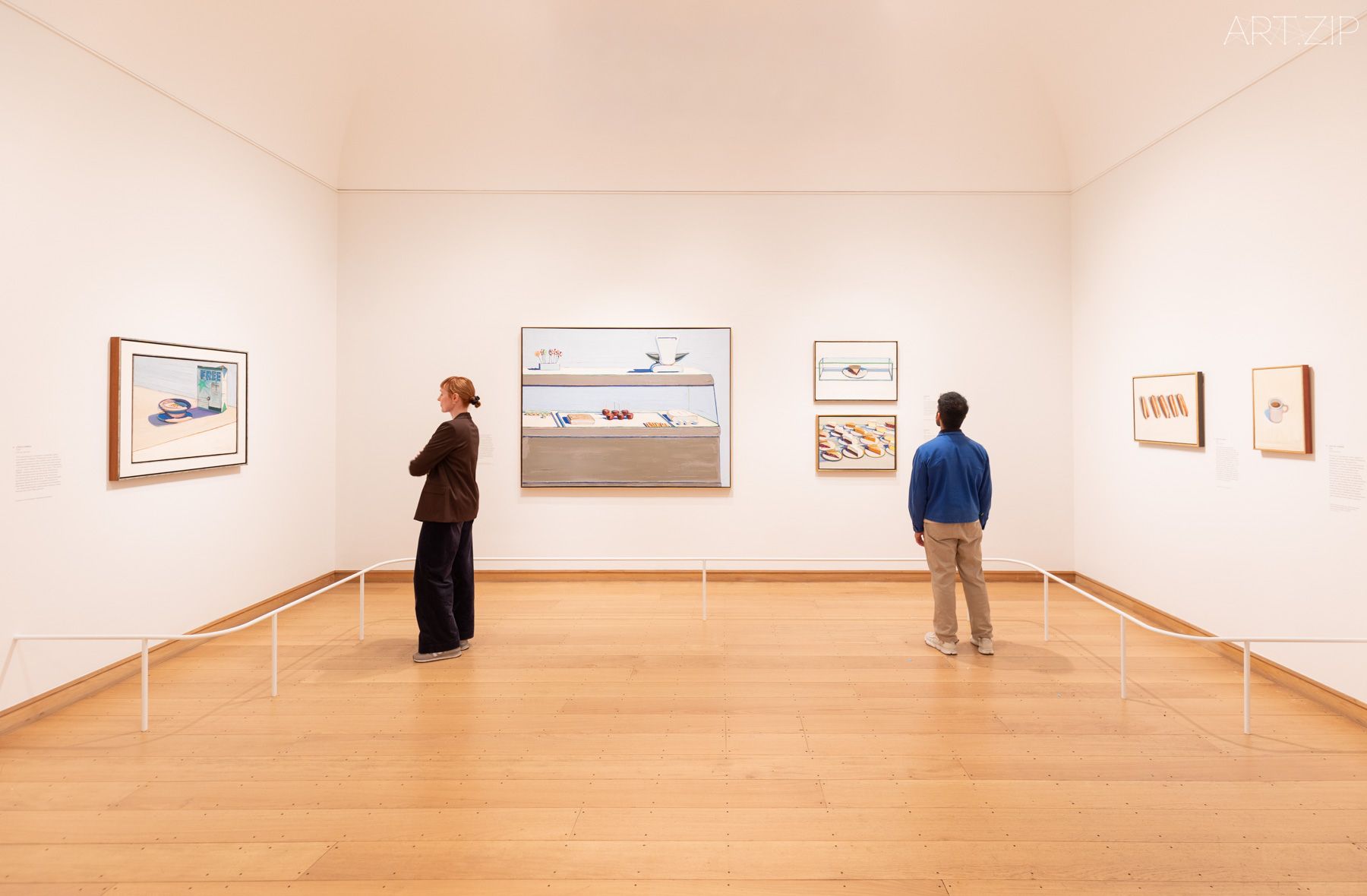
Frieze Week may have come to an end, but London’s art pulse shows no sign of slowing. From under-the-radar gems to major blockbusters, our editorial team has selected five must-see exhibitions that prove the city’s creative energy extends far beyond the fair.
Frieze藝術週雖已落幕,但倫敦的藝術脈動仍在持續。從隱而不顯的珍藏到眾人矚目的大展,我們精選出五個值得關注的展覽,因為這座城市的創意熱度遠不止於藝博會的一週。
Kerry James Marshall: The Histories
Royal Academy of Arts
20 September 2025 – 18 January 2026
Widely regarded as one of the most influential American artists of our time, Kerry James Marshall is celebrated with a major retrospective at the Royal Academy of Arts. Combining formal rigor with emotional depth, Marshall’s signature “rhetorical blackness” places Black life at the very heart of painting, reimagining a Western art history from which Black figures were long excluded. Marking the artist’s seventieth birthday, the exhibition spans eleven themed rooms and features eight monumental canvas works, which have earned all five-star acclaim from critics not only for their technical mastery but for the solemn beauty and quiet lyricism they bring to scenes of everyday life.
Born in Birmingham, Alabama, and raised in Los Angeles during an era of racial turbulence, Marshall has carried a calm yet unshakable belief. As he remarked in a BBC interview: “There has never been a moment in which I have not understood that I was capable of doing anything that I wanted to do. There’s never been a time.” That quiet conviction is the engine of his art. Drawing upon the precision of classical painting and the conceptual sharpness of contemporary image-making, Marshall portrays the Black figure as both fully present and richly symbolic, imbued with dignity, complexity, and grace. His luminous, obsidian skin tones are not simply depictions of colour, but statements of presence, radiant, layered, and alive. In his hands, black becomes not shadow, but light itself.
Marshall’s imagery weaves together threads from art history, civil rights, comic books, and personal memory. From the vibrant barbershop in De Style (1993) to the kaleidoscopic beauty salon in School of Beauty, School of Culture (2012) — where Holbein’s distorted skull from The Ambassadors reappears as Disney’s Sleeping Beauty—he transforms the ordinary life into visual epic. Even when engaging with histories of trauma or injustice, he rarely depicts violence directly; instead, his paintings breathe with a quiet, poetic force that reimagines the story of Black life. Meticulous yet exuberant, his art dazzles with the joy of colour — crimson, pink, and lemon yellow shimmering across the canvas in radiant harmony. Through his grandeur of form and classical discipline, Marshall not only redefines the boundaries of art history but also invites viewers to reconsider the meaning of beauty, power, and existence itself.
This exhibition offers a rare opportunity to experience the monumental vision of an artist who has reshaped the visual language of contemporary painting—and, in doing so, restored colour back into the history that once left it out.
當代美國最具影響力的藝術家之一Kerry James Marshall 於皇家藝術學院舉辦了其重要的回顧展。Marshall以強烈的形式與深沉的情感,加上他獨創的「修辭性黑色」筆觸,將黑人生活置於畫面中心,重塑了西方繪畫傳統中長期缺席的黑人形象。這場回顧展恰逢藝術家七十歲生日,集結了十一個主題展廳與八幅巨型代表作,無疑是本季最具震撼力的展覽之一,並獲得各大藝評人一致的五星好評。這不僅因為技巧精湛,更因為他賦予日常場景以歷史的莊嚴與詩意。
Marshall出生於阿拉巴馬州伯明翰,在洛杉磯成長於種族動盪的年代。他在BBC Podcast的訪談中說道:「我從來沒有哪一刻懷疑過自己能做想做的事——從來沒有。」這份篤定的自信,正是他藝術創作的精神核心。他以古典繪畫的精準筆法與當代修辭性的黑色形象,將黑人主體描繪得既真實又象徵,充滿尊嚴與力量。他筆下深邃的黑色肌膚不只是膚色,更是一種存在的宣言,光滑、閃耀、富有層次,既是對被忽視歷史的回應,也是對存在的讚頌。他讓「黑」成為繪畫的光源,而非陰影。
他的作品主題橫跨藝術史、民權運動、漫畫與個人記憶,從《De Style》中的理髮店場景,到《School of Beauty, School of Culture》中那個色彩絢爛的美容沙龍——畫面裡,荷爾拜因(Holbein)《大使們》中那顆扭曲的骷髏被轉化為迪士尼的「睡美人」——Marshall 巧妙地將嚴肅的藝術史與大眾文化並置,讓日常生活化為視覺史詩。即便觸及種族創傷與社會不公,他幾乎從不直接描繪暴力,而以深層的詩性與自信的筆觸,重建關於黑人生命的敘事。Marshall的藝術既嚴謹又充滿愉悅感,紅、粉、檸檬黃在畫面中交織出視覺的幸福感。他讓黑人形象在畫布上閃耀,以壯麗的形式與古典技藝挑戰藝術史的疆界,也讓觀眾在觀看的同時,重新思考美、力量與存在的定義。
這場展覽是一個難得的契機,讓觀眾親身感受這位正在重塑當代藝術視覺版圖的藝術家如何「以繪畫之名」為歷史補上缺席的色彩。
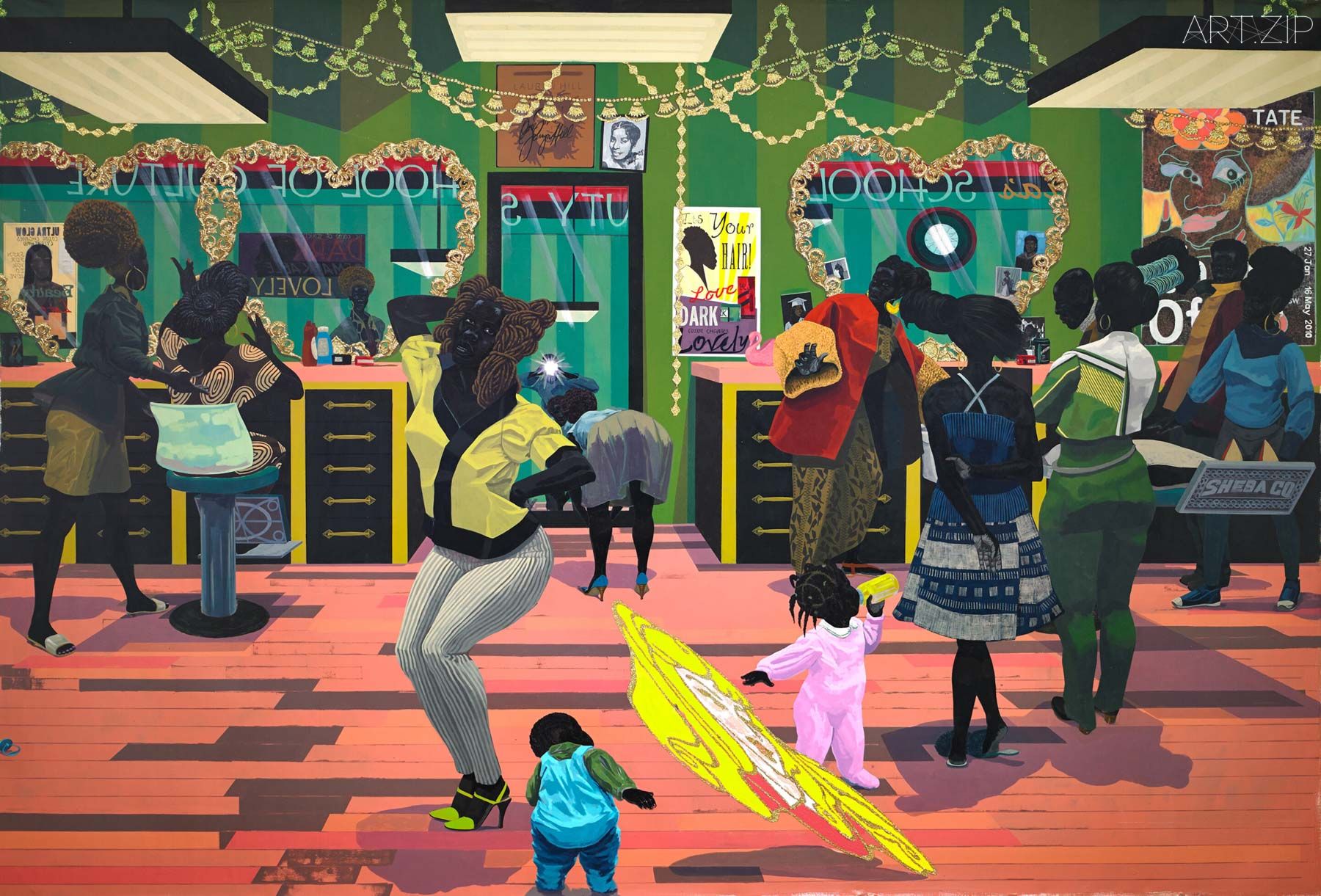
Kerry James Marshall, School of Beauty, School of Culture , 2012. Photo by Sean Pathasema . © Kerry James Marshall. Courtesy of the artist and Jack Shainman Gallery, New York.
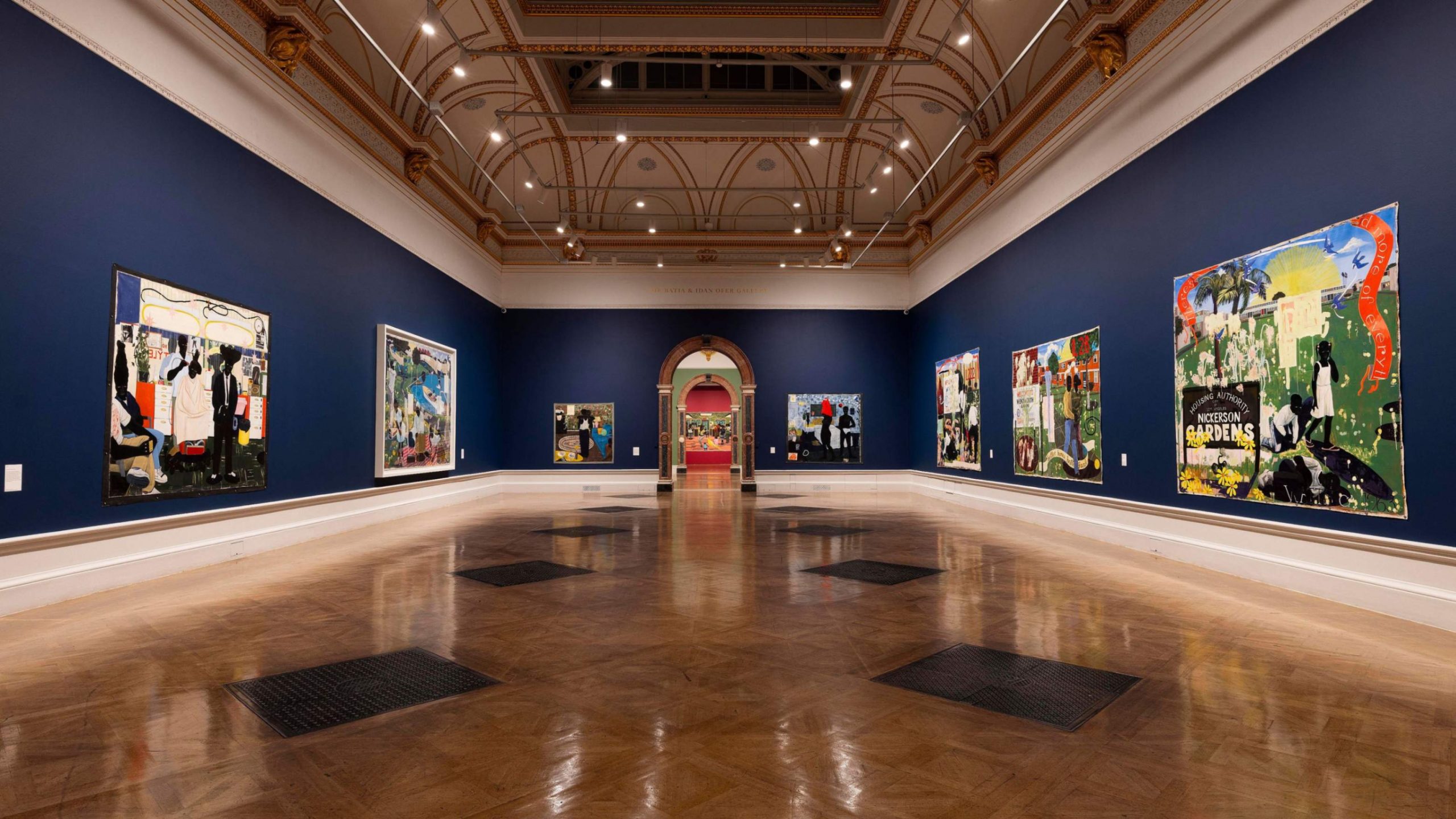
Exhibition view at Royal Academy of Arts. Courtesy David Zwirner.
Wayne Thiebaud: American Still Life
The Courtauld Gallery
10 October 2025 – 18 January 2026
Walking into Wayne Thiebaud: American Still Life feels like stepping into a memory wrapped in light. Rows of cakes, pies, candies, and pinball machines shimmer softly beneath a gentle glow. Yet this is not a satire of consumerism, nor a parody of Pop Art. Thiebaud never considered himself part of that movement. Rather, Thiebaud paints the ordinary with a devotional slowness, transforming mass-produced pleasures into meditations on time. As he puts it, “Each era produces its own still life.” For Thiebaud, the cakes and desserts on a counter were symbolized his era, just as Cézanne’s apples, or Manet’s cafés reflected theirs.
The exhibition opens with early works from 1956–59, Meat Counter and Pinball Machine. Their brushwork is bold and heavy, their reds and blues vibrating with postwar optimism and energy. By the 1960s, however, his touch had softened: the paint became smoother, the surfaces neater, the palette turned pastel and calm. Within that sweetness, restraint and the texture of time began to appear. Though his subjects seem mass-produced, each carries its own personality, no two cakes are alike, no two slices of pie identical. His desserts, his trays of pastries, are rendered with sculptural paint, each surface thickly built up. The grain of frosting, the curve of a porcelain plate, the glimmer of morning light on coffee — each holds a familiar weight. At that moment, one could almost smell the mingling of sugar and oil paint. Painting from memory, Thiebaud restored individuality and dignity to objects standardized by modern life. His colours are soft yet precise, pink, ivory, lemon yellow, pale blue, glowing with the warmth of recollection.
The iconic Cakes (1963) feels like a silent hymn, a meditation on postwar America’s abundance and emptiness, its desires and its order. Beneath the sweetness lies a quiet melancholy, the cool anxiety of modern optimism. Seen today, those empty trays and unattended counters are not just scenes of everyday life; they feel like echoes for a vanishing way of living, for local shops, for the small gestures of choosing and touching, for the warmth of human presence.
His cones melt quickly, as fleeting as the moments they recall. In Three Cones (1964), Thiebaud reflected, “The ice cream cone, for me, represents a kind of joy, a sort of temporariness… that very bright spirit that it once had — that kind of colour, light, liveliness — soon will be gone.” That statement captures the essence of his art: he did not paint permanence, but the light just before it fades.
He once described his still lifes as scenes of modern life or stage performances: “The objects are … like small landscapes, buildings, or characters in a play with costumes.” Within that vision, cakes, gumball machines, and ice creams become characters of time, performing under light, breathing in silence. Each work feels like a brief rehearsal on a stage, a small play about the sweetness and transience of life.
On the gallery’s first floor, Wayne Thiebaud: Delights presents his refined etchings and hand-coloured prints, Delicatessen, Cake Window, Bacon & Eggs, where lines are simple and rhythm serene, revealing the artist’s patience and quiet joy. The copper plates and engraving tools displayed in vitrines expose the care and time behind each work. Here, painting becomes meditation: remembering through making, and letting repetition crystallize time.
Thiebaud lived to be 101. In his later years, he turned to figures and cityscapes, exploring the geometry and solitude of urban light. Yet this exhibition focuses on his still lifes from the 1960s — his golden decade — when sweetness and silence together defined his language of time. Among these still lifes, Thiebaud painted the brightness and loneliness of America: a poetics of seeing, where to look is to prolong sweetness, and to watch is to wait for time.
To adults, Thiebaud’s paintings evoke nostalgia; to children, they awaken pure joy. Perhaps those are the memories he himself treasured most, simple, direct, and radiant. Art need not always be ironic. Sometimes, it can simply record what is beautiful, touched with a trace of passing sorrow, yet still carrying the warmth of light.
Thiebaud continued the classical tradition of European still life, but rewrote it in the language of American daily life. He made the ordinary visible again, where sweetness carries light, stillness breathes, and time glows just before it melts. It is about respect, about time, and about the quiet sweetness of an era.
走進《Wayne Thiebaud: American Still Life》,就像走進一場被光暈包裹的記憶——蛋糕、派、糖果與彈珠機在柔光中閃爍。這不是對消費文化的諷刺,也不是波普藝術的戲仿,Thiebaud從未認為自己屬於那個運動。對他來說,他畫的不是商品,而是那些在生活裡被他看見、記住、再度想起的日常之物。他曾說:「每個時代都會產生屬於自己的靜物畫。」對他而言,櫃檯上的蛋糕與甜品,正如塞尚的蘋果、馬奈的咖啡館,都是時代的映照。
展覽從他1956至1959年的早期作品開場,如《Meat Counter》《Pinball Machine》。那時的筆觸厚重奔放、色彩鮮明,紅與藍幾乎在震動,散發著戰後美國的樂觀與活力。進入1960年代後,他的筆觸逐漸變得細膩,畫面更為整潔,色調轉為柔和的粉彩,甜味裡滲出克制與時間的質感。
那些看似大量生產的食物,其實每一件都有自己的個性。沒有兩個蛋糕是完全相同的,也沒有兩片派可以互換。那些甜點、那些派的切片、被他以近乎雕塑的筆觸厚塗而成。糖霜的紋理、瓷盤的弧線、晨光落在咖啡上的閃光,都承載著熟悉的重量。那一刻,我幾乎能聞到糖霜與油彩混合的氣息。藝術家憑記憶作畫,讓這些被現代生活標準化的物件重新擁有個體性,也擁有了肖像的尊嚴。他的色彩柔和而節制,粉紅、象牙白、檸檬黃、淡藍……在回憶的溫度中發光。
那幅經典的《Cakes(1963)》像是一首無聲的頌歌,對戰後美國的富足與空虛、慾望與秩序的凝視。甜味的表層之下,是現代樂觀主義背後的冷漠與焦慮。如今再看,那些空著的托盤、無人的櫃檯,不只是日常的片段,也像是對「當地生活方式」逐漸消失的哀悼。人們的購買習慣、親手挑選的時刻、那種生活的溫度,正如他筆下的甜筒,融化得如此快。
在1964年的《Three Cones》中,Thiebaud曾說:「甜筒對我而言,象徵著一種快樂,一種短暫……那種光亮、色彩與生氣,轉瞬即逝。」這正是他繪畫的核心,他畫的不是永恆,而是消逝之前的光。他曾形容自己的靜物:「這些物件就像微型的風景、建築,或是一場帶著服裝的戲。」在這樣的想像中,蛋糕、糖果機、冰淇淋都成了時間的角色——它們在光裡表演、在靜默中呼吸。每一件作品都像舞台上的片刻排練,呈現著生命的短暫與甜美。
畫廊一樓的展區《Wayne Thiebaud: Delights》展出了他精緻的銅版畫與手工上色作品,《Delicatessen》《Cake Window》《Bacon & Eggs》等,作品線條簡潔、節奏平靜,透露著藝術家創作的耐心與喜悅。展櫃中陳列的銅版與刻刀,讓人看到作品背後的專注與時間。這裡的繪畫成為一種冥想:以製作來記憶,以重複來凝固時間。
Thiebaud享年101歲,晚年也創作了人物與城市景觀,探索城市幾何與孤獨的光影。然而,這次展覽僅聚焦於他1960年代的靜物繪畫,那是他最具代表性的黃金時期,也在甜味與靜默之間,定義了他對「時間」的藝術語言。在這些靜物之間,Thiebaud畫出了美國的明亮與孤寂,一種關於「觀看」的存在學:看,是一種甜味的延長,也是一種對時間的守候。
在成人眼中,Thiebaud的畫充滿懷舊;而在孩童的目光裡,那些蛋糕與冰淇淋喚起的卻是最直接的快樂。也許,那正是他成年後最珍視、最不願遺忘的記憶。藝術不一定要諷刺,它也可以只是溫柔地記錄美好,帶著一絲逝去的憂傷,卻仍保留著光的溫度。
Thiebaud延續了歐洲靜物畫的古典傳統,卻用美國的日常語彙重寫它。他讓平凡之物重新被看見,甜味裡有光,靜物裡有呼吸,時間在融化之前閃耀。那是關於尊重、關於時間、也關於一個時代的甜味。
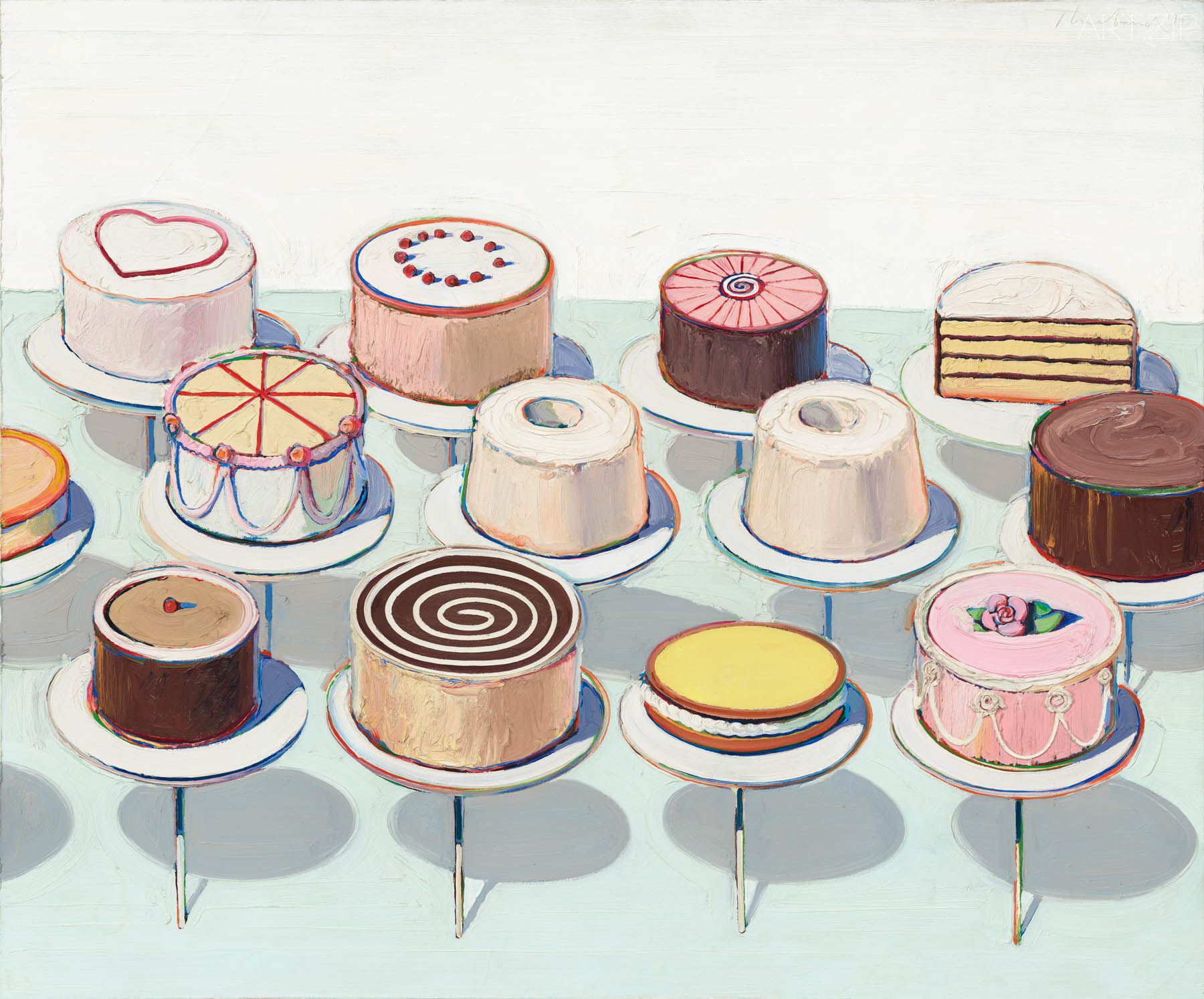
Wayne Thiebaud, Cakes , 1963, Oil on canvas, 152.4 x 182.9cm, National Gallery of Art, Washington, D.C. © Wayne Thiebaud/VAGA at ARS, NY and DACS, London 2025. Image: Courtesy National Gallery of Art, Washington
Peter Doig: House of Music
Serpentine South
10 October 2025 – 8 February 2026
Peter Doig has always painted like he’s dreaming with his eyes open. His paintings hover between memory and mirage, warmth and solitude. In House of Music, his new exhibition at London’s Serpentine Gallery, he takes this further, blurring the boundaries between painting, sound, and space. Critics called it “a house party where you don’t mind being sober,” a tender rebellion against the sterile quiet of the contemporary white cube.
The true protagonist here is sound. Doig fills the gallery with his decades-old vinyl collection, played through restored Klangfilm and Western Electric cinema speakers. These sculptural wooden giants breathe like relics of another age. Sound seeps into the air, echoing the textures of paint. Together, they form a drifting, resonant dream.
Much of House of Music draws from Doig’s Trinidad years — the sound systems, the light, the Lion of Judah that prowls across his canvases. His brushwork, like rhythm, is thick, loose, and full of feeling. Here, music transforms the act of seeing: viewers are invited to sit, to listen, to linger, entering his painted world through sound rather than sight.
The space itself resists convention. With rough-hewn furniture, soft light and acoustic curtains, the gallery feels more like a listening lounge than an exhibition. Some call it a club, others a dream chamber. Here, paintings and vinyl stand together against the sleek perfection of the digital age.
“Music, being an invisible art form, is open to interpretation within the mind’s eye, and reflections from the mind’s eye are often what I’m attempting to depict in my work”, says Doig. House of Music is not just an exhibition, it’s a resonance. In the meeting of sight and sound, we enter his private universe, and for a brief, suspended moment, everything, the world, the noise, the art, hums in tune.
Peter Doig 總是有種讓人走進夢境的感覺。他的畫像一層薄霧,既熟悉又遙遠。而這一次,在倫敦蛇形畫廊(Serpentine Gallery South)舉辦的《House of Music》,他更進一步地讓繪畫與音樂、聲音與空間融為一體。評論家稱之為「一場無需醉意的家宴」,也是對當代藝術空間的一次溫柔反叛。
這次展覽的主角是「聲音」。Doig將他珍藏數十年的黑膠唱片帶入展廳,用修復後的Klangfilm與Western Electric影院音響播放。那些龐大、溫潤的木質喇叭,如同來自上世紀的雕塑,靜靜矗立在畫作之間。音樂與色彩在空間中相互呼應,讓觀眾彷彿置身於一場漂浮的夢。
靈感來自他在特立尼達生活的歲月。畫中的巨大音響塔、熱帶色調、反復出現的「猶大之獅」,都帶著加勒比的節奏與靈魂。有評論家說,他的繪畫如同音樂,濃稠、自由、帶著情緒的重量。音樂改變了觀眾與畫作的關係:人們不再走馬觀花,而是被邀請坐下、聆聽、停留,在聲波的節奏中進入畫中的世界。
畫廊佈置也顛覆了傳統的觀展方式。粗木桌椅、柔和燈光與吸音簾幕讓空間更像一間聆聽室,而非展廳。有人形容它像俱樂部,也有人說它更像能做夢的房間。在這個充滿溫度的場域里,繪畫與黑膠唱片一同對抗數字時代的冷漠與完美。
「音樂是一種無形的藝術,它在人的『心眼』中被感知與詮釋;而我所嘗試描繪的,正是那種從心眼中浮現出的回響。」Doig這樣說。《 House of Music 》不僅是一場展覽,更是一種共振,在視覺與聽覺的交匯處,讓人短暫地走進藝術家的世界,體驗那種既親密又遙遠、既清醒又夢幻的片刻。
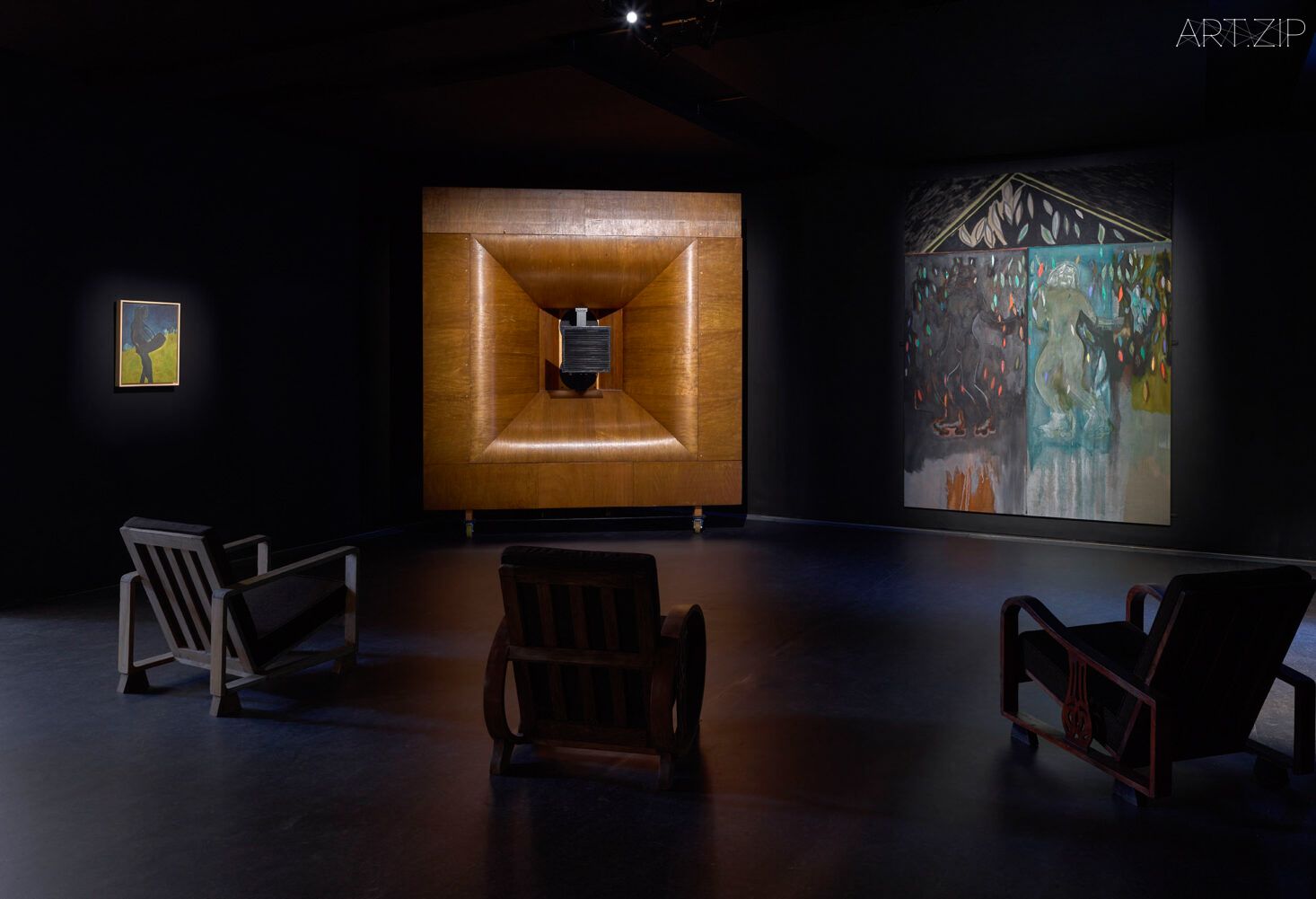
Peter Doig: House of Music, Serpentine South, 10 October 2025 – 8 February 2026. Photo: Prudence Cuming Associates, © Peter Doig. All Rights Reserved and Serpentine.
Ryoji Ikeda: data – cosm [n°1]
180 Studios
15 October 2025 — 21 December 2025
In the darkened room of 180 Studios, Ryoji Ikeda turns data into a language of the cosmos.
Commissioned by 180 Studios, Ikeda’s latest site-specific installation, data – cosm [n°1], continues his long-term exploration of the “data-verse”, transforming scientific information drawn from nature, from the quantum scale of particle physics to the vast reaches of astrophysics, into a pure sensory encounter of light, sound and time.
In the exhibition room, data – cosm [n°1] unfolds like a giant scientific apparatus. Visitors are invited to lie on the floor, gazing upward at a vast LED canopy that flickers with cascading streams of data. Low and high frequencies vibrate through the body, seeping in like air yet pulsing with the precision of a heartbeat.The work constructs a threshold between science and perception, a microscope, a telescope, a clinical device, a monitoring system, and perhaps a dream machine. It looks like an apparatus, yet feels like a portal to the unknown. One is not simply watching; one is absorbed, swallowed whole.
The cosmic journey were pulled along by data. It opens and closes with a black circular form, both black hole and wormhole, a symbol that serves as entry and exit. Viewers seem to pass through a tunnel in spacetime, drawn into a vortex of infinite data and expelled back into reality. This enclosed structure gives the piece a clear sense of beginning and end, like a voyage through a self-contained universe.
Visually, the rapid flux of data produces an almost weightless sensation, while the sound moves more slowly, detached and meditative like breathing, yet precise as a heartbeat. The two drift out of sync, pulling against and into each other, guiding the viewer into a state of flow: not passive immersion, but deliberate stillness. As the imagery accelerates overhead, it triggers a strange illusion of movement, as if drifting with the data through boundless space.
For most of its duration, data – cosm [n°1] maintains a calm intensity: flickering, throbbing, yet strangely calm. Then near the end the rhythm accelerates. A sudden flight, or fall. Data pours downs like a storm.The tempo becomes breathless, disorienting. At the point where image and sound collide, it feels like a flash of consciousness before death: memories and codes whirling violently before the eyes. The sensory surge reaches a peak, turning into something both ecstatic and terrifying, a near-sacred climax inside the mind.
Ikeda has always sought balance between reason and sensation. Since the 1990s, he has translated mathematics, physics, and sonic language into forms that can be felt rather than explained. Data – cosm [n°1] extends his data-verse series, continuing his experiments in making the invisible world of information tangible. Yet this work carries a stronger sense of rhythm and narrative; it is no longer a cold experiment, but a temporal journey charged with emotion. Ikeda reminds us that every bit of information, however abstract, still carries the hum of the real world, the pulse of life itself.
Leaving the gallery, the torrents of light and sound continue to echo in the mind, the heartbeat quietly quickening. Are the origins, trajectories, and disappearances of humankind all secretly coded in some invisible data stream? In a world governed by information and algorithms, how can we locate ourselves again within this vast ocean of numbers?
在倫敦 180 Studios 的黑暗空間裡,Ryoji Ikeda 讓數據成為一種宇宙語言。
他的新作《data – cosm [n°1]》延續了他對「數據宇宙」的探索,以真實的科學資料為素材,從微觀粒子到宏觀天體,將龐大而抽象的資訊轉化為光、聲與時間的感官體驗。展場被設計成一座巨型觀測儀:觀眾被邀請仰躺在地上,如仰望星空般注視著巨大的 LED 天幕。數據影像在無限延展的光域中閃動,低頻與高頻的聲響穿透身體,像空氣一樣緩慢滲入,又如心跳般堅定有節奏。作品構築出一個介於科學與感知之間的臨界空間,也許是顯微鏡,是望遠鏡,又抑或是夢境機器;看起來像冷靜的實驗裝置,卻又似通往未知的窗口。此刻,人不再只是觀看,而是被吞沒。
這是一場被數據牽引的宇宙旅程。影片的開頭與結尾出現一個象徵性的黑色圓形,它是「黑洞」,又是「蟲洞」,既是入口,也是出口。觀眾彷彿穿越一條超時空的隧道,被吸入無窮數據的漩渦,又從另一端被吐回現實。這種封閉而循環的結構,讓作品有了明確的起點與終點,如一次完整的宇宙旅行。
在視覺上,飛速閃動的數據影像帶來一種幾近失重的錯覺;而聲音的頻率卻比畫面緩慢,超然得像呼吸,精準得像心跳。兩者在時間感上錯開,彼此牽引,引導觀眾逐步進入心流的節奏,不是被動的沉浸,而是主動的沉靜。當巨大的影像以高速掠過頭頂時,錯覺讓人以為自身也在移動,彷彿身體與數據一同漂浮於無垠的空間之中。
作品的大部分時間維持著一種平靜的強度:閃爍、脈動,卻又出奇地安定。直到接近尾聲,畫面與聲音突然加速,如同一次急速飛行。數據像暴雨般傾瀉而下,節奏急促得幾乎讓人失去方向。當視聽節奏交疊至極點的那一刻,彷彿臨近死亡前的意識閃回。所有記憶與數據在眼前急速翻湧。聲光的衝擊達到頂點,轉化為一種奇異而近乎神聖的顱內高潮,讓人既期待又畏懼。
Ikeda的作品總在理性與感官之間尋找平衡。自上世紀九十年代以來,他一直致力於將數學、物理與聲音語言轉化為可被感知的秩序。《data – cosm [n°1]》可視為其「data-verse 數據宇宙」系列的延伸,持續了他將不可見的資訊世界重構為感知經驗的實驗精神。但這次的節奏更具敘事性與情緒密度,不再只是冷峻的實驗,而是一場帶有張力的時間旅程。Ikeda提醒我們,每一個抽象資訊片段仍承載著現實世界的律動與生命脈動。
離開展廳時,那些無窮無盡的數據洪流與聲光仍在腦海中盤旋,心跳仍在暗暗加速。人類的誕生、軌跡與消失,是否都被某種無形的數據所編碼?在被信息與演算法包圍的時代,我們又該如何重新感知自身在浩瀚數據中的位置?
Gus Monday: Three Rooms – Museum, Institution, Gallery
Carl Kostyál
14 October 2025 — 15 November 2025
In Three Rooms – Museum, Institution, Gallery, Gus Monday turns his gaze toward three familiar spaces of the art world: the museum, the institution, and the gallery. Installed across three adjoining rooms at Carl Kostyál, London, the exhibition makes the gallery itself part of the work, each space responding to how art is seen, collected, and displayed.
This is Monday’s first solo exhibition in London, following his MA at the Royal College of Art (2024) and BA in Fine Art from City & Guilds of London Art School (2023). His paintings are meticulous yet restrained, revealing both strong technical skill and a quiet fascination with Western art history. Traces of the past emerge in his compositions like faint echoes, sometimes familiar, sometimes strange.
In V&A East Storehouse / Iziko Conservation Room (2025), “veiled ghosts” wander through contemporary institutional settings, witnesses and at times casualties, of preservation. The painting references a sculpture by Barbara Hepworth, recently retained in the UK through a £3.8 million public appeal, while its overall composition also recalls Carlo Crivelli’s The Annunciation, with Saint Emidius (1486), weaving a silent dialogue between the classical and the contemporary.
Born in 2000, Gus Monday paints with a quiet attentiveness to history and the present. His work goes beyond painting itself to ask a simple but resonant question: what do we choose to preserve, and what do we allow to fade?
在《Three Rooms – Museum, Institution, Gallery》中,Gus Monday 把目光投向藝術世界裡三種再熟悉不過的空間:博物館、藝術機構和畫廊。展覽在倫敦 Carl Kostyál 畫廊的三個相連房間展開,空間本身也成了作品的一部分。每一個房間都在回應藝術被觀看、被收藏、被展示的方式。
這是 Monday 在倫敦的首個個展。他先後畢業於皇家藝術學院(2024)與倫敦藝術與設計公會學院(2023)。他的畫風細膩而克制,對西方藝術史的興趣藏在構圖與筆觸之間,像隱約閃現的回聲,時而熟悉,時而陌生。
在《V&A East Storehouse / Iziko Conservation Room》(2025)這件作品裡,那些「被遮蔽的幽靈」猶如藝術史的回聲,在當代機構的空間裡徘徊。它們既是保存的見證者,也是不斷修復過程中的犧牲者。畫面中可見到對 Barbara Hepworth 雕塑的引用——那件作品不久前透過一項 380 萬英鎊的募資計畫得以留存於英國。整體構圖讓人想起 Carlo Crivelli 的《The Annunciation, with Saint Emidius》(1486),在古典與當代之間編織著一場靜默的對話。
出生於 2000 年的Gus Monday,以安靜的方式與歷史對話,也與當下同行。他的作品不只是關於繪畫,更在提問:我們選擇保存什麼,又讓什麼緩緩消逝?

Freemasons Hall, 2025, 122 x 190 cm, Oil on linen on panel. Courtesy the artist.
Text by 撰文 x Rinka Fan, Michelle Yu

